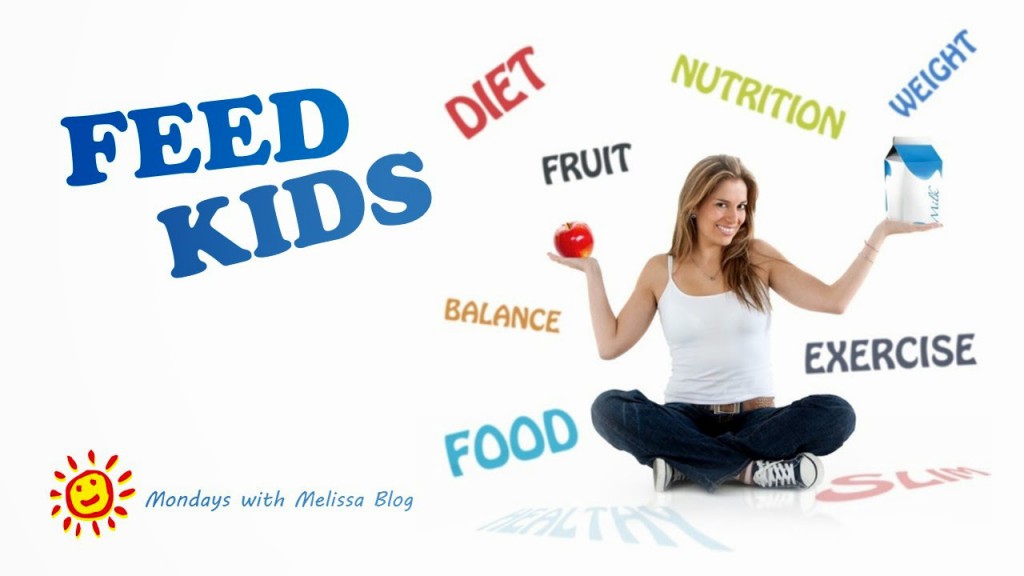 |
| image: envato |
Dear Melissa,
I admit that when my family gets busy, I tend to not feed my kids as well. I’m ready to start the New Year right. Do you have any tips?
You are not alone! I applaud you for taking the first step…being willing to change! This is a perfect time for the WHOLE family to work on goals to help promote health. When it comes to weight loss/gain, these topics should be discussed with your child’s pediatrician. However, the following are a few general strategies I use with my own kids to help prevent crankiness and promote health.
1) Eat 5 servings of fruits/vegetables every day.
It seems as if everyone has an opinion as to what constitutes a “healthy diet”. Gluten free. Vegetarian. Mediterranean. Paleo. Low fat. Low carb. However, almost all dietitians agree that, in general, a mostly plant-based diet is best. We all know this; we need to just plan ahead and do it!
TIP: Keep a bowl of fruit and/or vegetables on the kitchen table for easy access and promote these items as snacks rather than “junk food.”
2) Mix protein with complex carbohydrates at all snacks/meals.
This prevents blood sugar swings and either crankiness or hunger later.
TIP: Easy, quick options include peanut butter toast, apple with a cheese stick, milk with graham crackers, celery with peanut butter or cheese, trail mix with dried fruit/nuts, low fat yogurt with granola and/or fruit, whole grain cereal with milk, turkey sandwich on whole wheat bread, etc.
3) Choose drinks carefully.
Be leery of sweet drinks. About 1 in 5 children consume excessive calories from soda, other sugar sweetened beverages, and fruit juice, with juice being the major contributor (Clinical Pediatrics). There is some debate about milk. The Choose My Plate national nutrition site from the Department of Agriculture recommends water or low-fat milk. However, recent literature suggests a possible reverse relationship between fat content and milk – children who drink 2% or whole milk actually have lower BMI than children who drink skim or 1%.
TIP: Only drink water or milk. Avoid or significantly limit all forms of sugar-sweetened drinks/sodas/juices.
4) Eat Breakfast.
We have heard it a million times and it is true. Breakfast is the most important meal of the day! Make sure it is a healthy meal consisting of a complex carbohydrate and protein. NO SIMPLE SWEETS!
TIP: Steer clear of toaster pastries, muffins, sugary cereal, and donuts. Better ideas for quick breakfasts would include whole-grain cereal and milk, yogurt with granola/fruit, a cheese stick with a piece of fresh fruit, peanut butter toast, etc…
5) Move your Body!
Yes, the weather is cold outside, but it is still important for the family to move together. Reduce the TV/video game time and MOVE! Numerous studies have shown that exercise can help mood, attention, cognitive function, and cardiovascular health. WALK places whenever you can.
TIP: Consider “imagining you are animals” (e.g., bear walking, crab walking, crawling like puppies), pillow fights, indoor obstacle courses, or moving-your-body video games. You can simply turn on some music and just dance!
6) Picky Eater Woes?
Prioritize reaching out to your child’s speech therapist, occupational therapist, or pediatrician for help.
TIP: For some children who are picker eaters it can help to offer several healthy options, but then give the child the autonomy to choose what he or she eats. Your goal is to achieve variety throughout the entire day, but not necessarily at every meal.
What tips do you have for making your child healthier for 2015? Please share!
share@childrenstherapyteam.com
Resources:
Nutrient Intake and Consumption of Fruits and Vegetables in Young Children, Ramsay, Eskelsen, Branen, Shultz and Plumb, Infant, Child, & Adolescent Nutrition, Volume 6, (December 2014).
Opportunities to Reduce Children’s Excessive Consumption of Calories From Beverages,Clinical Pediatrics, Rader, Mullen, Sterkel, Strunk, Garbutt, Volume 53, (October 2014).
Food and Nutrition Information Center, Beltsville, Maryland, www.Nutrition.gov
United States Department of Agriculture, www.Choosemyplate.gov
